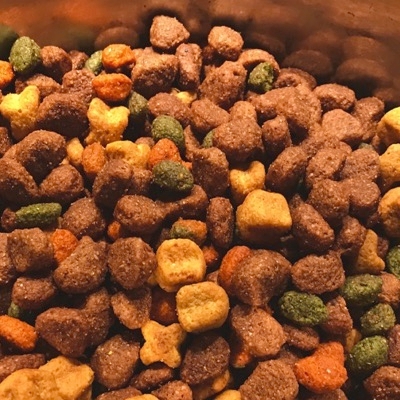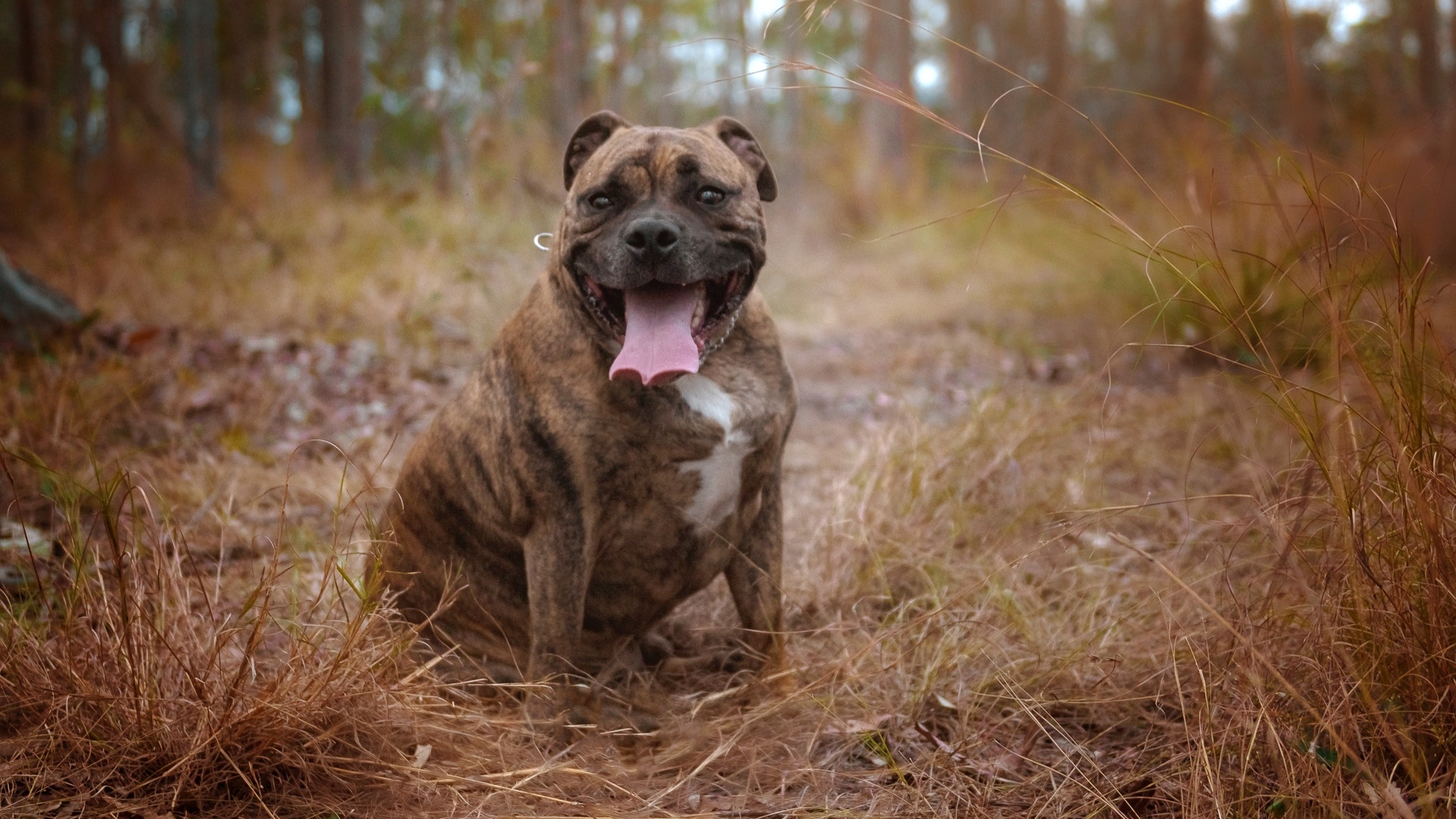Obesity In Pets:
Summary:
There are many good-quality dog foods for sale; read the labels and talk with your veterinarian if you need help deciding what to feed your dog. Many people only feed their dog dry food, since it's more convenient to serve, has less odor, is less likely to spoil in the bowl, and can reduce the build-up of tartar on the dog's teeth. Remember to have fresh, cool water available for your dog at all times.


Is your pooch pudgy? Is your feline fat? When you try to feel ribs, do you feel folds of fat instead? Obesity is an increasing health risk to our companion animals, specifically for our dogs and cats, and one that is rarely recognized by their people as a real problem. In fact, some find it cute — but it's a real health risk.
You might not notice that your pet is gaining weight, since it generally happens slowly over time. Among people who have pets, the ideal weight of their pets is subjective and it's difficult to define when a pet is slightly overweight or underweight. However, I think most people recognize when a pet is severely overweight. Veterinarians define obesity as a dog or cat who has large fat deposits over the chest, spine, neck and base of the tail; an obvious distended belly; and loss of a “waist.” When viewed from above, the animal has a rounded pear shape.
Just as in the human world, obesity can lead to secondary medical and orthopedic problems in our pets. Diabetes is a serious complication that can be secondary to obesity. The pancreas secretes insulin in response to an increase in blood sugar (eating a meal). In an obese animal, the pancreas is chronically over-stimulated and basically gets worn out; it cannot produce the insulin necessary to maintain a normal blood sugar. Though diabetes can be treated and controlled, it is a stress on your pet's body and often leads to blindness in dogs and significant muscle weakness in cats.
Pancreatitis is another condition that occurs frequently in the obese dog or cat. The pancreas secretes not only insulin but also other enzymes to help with digestion. This condition causes the pancreas to secrete enzymes to such a degree that it actually starts digesting itself. Cats and dogs with pancreatitis will vomit and develop diarrhea and a very painful belly. If not treated, a pet can die from this condition.
Finally, obesity can lead to degenerative joint disease or arthritis. Simply put, the more weight the joints and tendons have to support, the more they begin to break down — causing chronic and often severe pain.
So how do you avoid obesity in your pets? First, be aware that obesity exists and is a problem for companion animals. Recognize that, just as in people, certain animals will have a fast metabolism and some will burn calories more slowly. Similarly, some pets will keep themselves at a good weight without much intervention from their people, while others need a pretty stern gatekeeper at the food bin.
Second, maintain a good relationship with your veterinarian. He/she can help you determine an ideal weight for your dog or cat, provide diet options and help you recognize early on when your pet is tipping the scales in the wrong direction. Regarding feeding: Both dogs and cats should be fed a measured amount of food daily (i.e., don't keep filling the bowl). This not only helps to prevent your pet from overeating, but also allows you to monitor his intake more closely and notice appetite changes, an important sign of illness. Your veterinarian can help you determine just how much food your pet should eat daily.
This type of feeding is really important in a multiple-cat household. It takes some time, but you can learn the routines of your cats and their dietary needs. Because cats can develop severe liver disease if they do not ingest enough calories, you could give your highly active cats some extra feedings away from your lower-energy kitties. Or you can try and separate your cats at feeding time so you can individualize their meals.
Third, avoid giving people food to your pets and give treats judiciously. It's nice to add some variety to your pets' food or reward them for good behavior, but don't overdo it. Remember, food does not equal love. Walks, play time, petting and quiet time alone with your pet all say “I love you” just as effectively as giving treats.
If you have an animal who is already overweight, diet and exercise are the best ways for your pet to drop those extra pounds and ounces. With severely overweight pets, you need to start slowly with an exercise routine to avoid injury. Slow, steady weight loss is the healthy way to go. Work closely with your vet to determine what type and amount of food and exercise are right for your pet, and get his/her advice before putting your pet (especially a cat) on a weight loss diet. Losing weight safely is just as important for our pets as not becoming obese to begin with.


